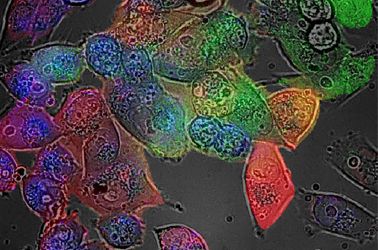The Australian Research Council Centre of Excellence for Nanoscale Biophotonics draws on key advances of the 21st century, nanoscience, and photonics to help understand life at the molecular level. In this presentation, next-generation technologies developed in our Centre for probing, imaging, and interacting with the living systems will be discussed. These address the key challenges of ultrasensitive detection of key analytes in real complex environments and molecular complexity, and they support both novel therapies and diagnostics.
Presenter: Prof. Ewa Goldys, PhD
Deputy Director, Australian Research Council Centre of Excellence in Nanoscale Biophotonics
Professor Ewa M. Goldys is Deputy Director of the Australian Research Council Centre of Excellence in Nanoscale Biophotonics (cnbp.org.au) and Professor at the Graduate School of Biomedical Engineering, the University of New South Wales, Sydney, Australia. She is Fellow of SPIE, OSA, the Australian Academy of Technological Science and Engineering (ATSE), and winner of the 2016 Australian Museum Eureka Prize for ‘Innovative Use of Technology.’ She has ongoing involvement with SPIE BIOS, the world's largest international biomedical optics meeting and SPIE's Photonics West where she serves as Track Chair in Nanobiophotonics.
Her research spans the areas of biomedical science, bioimaging, biosensing, and materials science. She developed novel approaches to biochemical and medical sensing and deployable medical diagnostics. Current projects focus on cancer nanotechnology and non-invasive high-content imaging of colors and patterns in cells and tissues.

